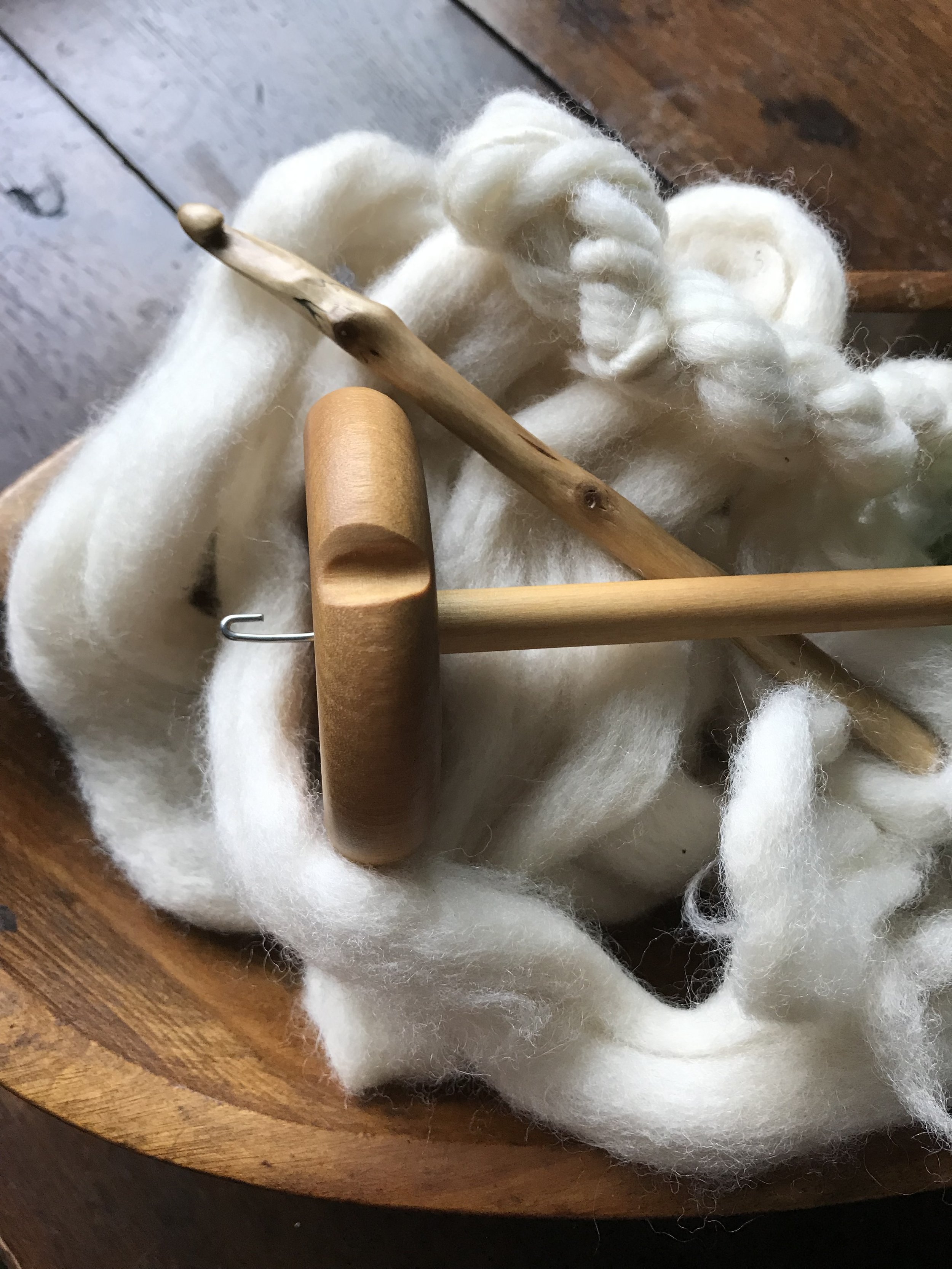Making A Difference
When someone learns to create with yarn, thread, and cloth, they step into traditions as old as mankind. The story of textiles touches all people across nationality, ethnicity, socio-economic status, age, gender…name any category in which humanity can be placed, and those people are impacted by textiles, which are fiber art.
Understanding this can transform a person’s view of cloth, clothes, the earth, and their role in this world. That alone is reason enough; however, the joy and health benefits that come with making something by hand are well documented. I want to share my knowledge and skills with as many people as possible. I know it makes a difference.
About My Vision
It all began when I created my first hank of yarn, first on a spindle then on a wheel. I was completely smitten and convinced that everyone who loves yarn should work with hand spun yarn at least once in their life.
Hand spun yarn has life and vitality. Human hands raised the sheep, sheared the wool, washed, picked, combed or carded then spun the wool. It is a labor of love.
Wool
I strive to use wool from small farmers in Texas first, then from other states in the United States. It is most important to me that the wool comes from ethical sources. Happy, well cared for sheep produce lustrous wool.
Generally speaking, I do not use superwash wool. The process of removing the scales from the wool permanently changes the nature of the fibers. I do choose very fine wools for all things destined to be worn next to the skin. These include Merino, Polwarth, and Rambouillet, among others.
You will find a section of art yarns that use more coarse wools and are generally highly textured and intended for home decor projects, weaving or felting.
Process
Once the wool is washed, prepared through carding or combing, it is dyed, then sometime put through the carding process once again to add sparkle, texture and other colors to the base wool.
Then, it is ready for the magic of the wheel or spindle.
Hand spinning is a very labor-intensive process. The ability to create yarn is one that requires technical skill as well as an artistic eye. The wheel, whether foot powered or electric cannot produce yarn without the hands of the artist.
Products
Because of the work required, hand spun yarn, if made and sold in similar quantities as factory made yarn would be cost prohibitive to most people, myself included.
From the very beginning, my desire has been to create beautiful, yarn that can be used as an accent in a larger garment, or in smaller quantities for projects that don’t require much yarn. I have designed items such as puff heart ornaments, trinket bowls, coasters, headbands/ear warmers, bracelets and earrings all of which can be made with smaller yarn quantities. I hope you find something that speaks to your heart and that you give hand spun yarn a try.





